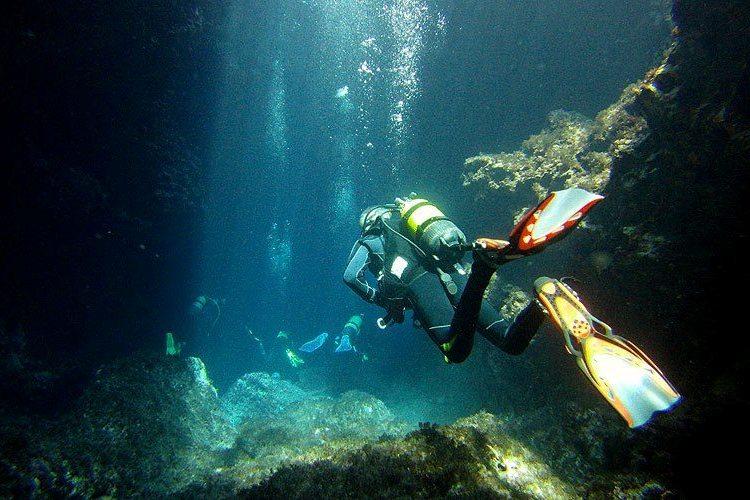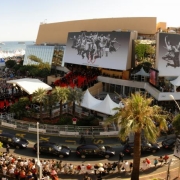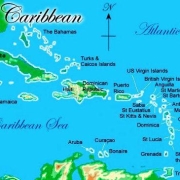Yacht Charter: Cruises to the Best Diving Spots in the Western Mediterranean
22 February 2018




Allied Yachting offers cruises to the best diving spots in the western Mediterranean in its yacht charter program for your holidays. Motor yachts, catamarans and sailboats – these luxury yachts have all the necessary equipment for your diving needs.
While most of our boats offer snorkelling, some of the boats included in our crewed yacht charter program offer scuba diving either with an on-board Dive Instructor, Dive Master, or diving via a local and recommended rendezvous diving company. Some of our yachts also offer diving courses so that non-certified charterers can learn to dive and sometimes be certified during their charter. We offer charters to the best diving spots in the western Mediterranean as well as the best diving destinations in South of France (including Corsica), Italy (Capri, Sardinia and Sicily, including the Aeolian Islands), Spain (Ibiza and Mallorca in the Balearic Islands), Croatia and Malta.
Our selection of yachts ensures cruises to the western Mediterranean diving spots with breath-taking diving trips in perspective! – Wherever you imagine diving, we will offer you a perfect yacht and crew for your most exceptional boating holidays, to the diving destinations that are part of the Mediterranean ‘musts’.
The Western Mediterranean is not only known for its land-based destinations, but also for its diving spots according to the ‘European Best Destinations’ website, which promotes European culture and tourism.
Allied Yachting offers yacht charter services for your diving trips to explore the underwater world of the best diving spots in the western Mediterranean. As certified and experienced divers as well as snorkelers will have a lot to do since we offer excursions adapted to all levels and interests, here are some of the best known:
PORQUEROLLES AND PORT-CROS NATIONAL PARK, FRANCE
Europe’s first marine park, the Port-Cros National Park preserves since 1963 the quintessence of Mediterranean marine biodiversity. Calanques and coves offer boaters shelters once prized by pirates.
The Port-Cros National Park brings together more than 70 marine species, including the famous grouper, local emblem. Snorkelling or equipped, it’s time to dive into the world of silence.
Your diving party will be able to explore exceptional sites. Discover the protected sites and dive in the heart of the Port-Cros National Park and the Porquerolles Island, from Cavalaire to the peninsula of Giens. In addition, explore the most beautiful shipwrecks of the Mediterranean and let yourself be surprised by the mythical wrecks Donator, Greek, Togo, Ruby, Arroyo …
Hyères, Porquerolles and Port-Cros offer more than 50 diving sites, some of which are considered some of the most beautiful in the Mediterranean. This diversity of sites allows everyone to find happiness based on their level and preferences.
In Porquerolles you will appreciate the cleanliness of the waters, the majesty of the seabed, the rich biodiversity of the marine park. Sign of the good health of the waters of Porquerolles and the good policy of safeguarding the environment, posidonia meadows proliferate.
Among the most common species you will find sea breams (sea cow!), sea cucumbers, sea urchins, groupers, morays, wrasse and giltheads …
The temperature of the water is about 15° C in winter and 23° C to 25° C in summer!
CORSICA, FRANCE
Diving in Corsica, is to discover this island with many beauties by the face which is the most hidden! An island preserved in the heart of the Mediterranean, with diving spots like the Scandola Natural Reserve, classified World Heritage by UNESCO, Corsica holds true promises of an intense diving experience. If it is the wrecks that interest you, you will find plenty: the Corsican seabed has several dozen, of all ages, sizes and depths!
Located in the south-east of the Cote d’Azur, west of Tuscany and overlooking Sardinia, Corsica is an island with multiple contrasts, varied relief, bordered on its southern coast by steep cliffs, as if to better protect the wild charm of the passing traveller. The island is in the natural setting of this azure-blue sea which shelters a great diversity of protected underwater fauna, in the heart of an international park and numerous natural reserves (Scandola, Finocchiarola, Biguglia, Cerbicale, entrance of Bonifacio and Tre Padule de Suartone). In the Gulf of Sagone, the dives are beautiful, with amazing underwater landscapes and very varied and especially a remarkable visibility (even at 40m). It’s simple, you literally feel like flying! And in May-June, you have the sea for yourself in truly exceptional conditions: a wonderful experience.
In short, going diving to Corsica, is to discover rich and varied sea beds which are declined in as many faults, peaks, canyons or massive, sanctuaries of an underwater flora (almost) spared from any pollution. Corsica has an international reputation for the quality and diversity of its diving spots … they count in the hundreds. A beautiful diving destination to explore preferably from May to October where the temperature is from 22° to 32°!
GENOA, ITALIAN RIVIERA
Genoa is a port city, but also the capital of Liguria, a region in north-western Italy also known as the ‘Italian Riviera’. Well known for its maritime trade, it is home to the Romanesque San Lorenzo cathedral, which has a black and white striped façade and a frescoed interior. What characterizes Genoa is also a multitude of small narrow streets and forming a maze of streets or Piazza de Ferrari.
With a water temperature ranging from 13 to 26°, the Mediterranean Sea around Genoa is home to a variety of wildlife at accessible depths. The opportunity to meet groupers, barracudas, or turtles.
CAPRI, ITALY
Capri is an Italian island in the Bay of Naples known for its rugged landscapes and upmarket shops and hotels. One of its most famous natural tourist spots is the Blue Cave (Grotta Azzurra), a dark cavern where the sea is of an electric blue colour because of the sunlight that passes through the underwater cave. Very popular, the island of Capri is stormed in the summer and attracts many boaters who come to enjoy the islands around the Bay of Naples. The air and the water are much warmer in summer with an average water temperature of 25° from June to September (14° at the coldest between February and March) and an average outside temperature at year of 21.6°.
Famous as one of the most beautiful islands in the Mediterranean, Capri is known for its many caves and rocky islets of various shapes that rise to the sky. The highlights are those of Punta Carena and its famous ‘pylon’ (a 62m deep wall) and the jump of Tiberius.
SARDINIA, ITALY
Sardinia is the second largest Italian island, which has nearly 2,000 km of coastline and located in the heart of the Mediterranean Sea between Corsica and Tunisia. A hilly oasis of mountains and hills peaking at 1,834 meters above sea level, it also has a beautiful coastline bordered by the turquoise waters of the Mediterranean. The infinite variations of blue and the rock formations are part of the natural beauties whose discovery is advised during a diving trip.
Sardinia has several dive spots to choose from, according to your needs and desires. The water is so clear, it is a dream place for diving and snorkelling enthusiasts. You can discover various wrecks such as those of 3 Fratelli, the Gulf of Angell and the Secca del Papa. For natural landscapes, you will not be disappointed to explore its caves.
To the south, in the Gulf of Cagliari, you will find wrecks of the Second World War that lie 30 meters deep. The Carloforte site is a superb spot for swimming with schools of tuna in caves and underwater gorges. Finally, Nora is an underwater archaeological site where buried Punic-Roman ruins lye.
In the North-East, in the heart of the Tavolara reserve, the Secca del Papa is a beautiful diving site to see groupers, barracuda or moray eels. Near Cape Caccia, the Nereo Grotta is famous for its splendid red coral. The National Park of the Maddalena Archipelago is also home to one of the most beautiful collections of Roman shipwrecks.
The climate in Sardinia is Mediterranean with mild temperatures all year round. The best months to dive are those of September and October just after the summer crowds of tourists. The temperature of the water varies between 14° the winter and 26° the summer.
Visibility in Sardinia is generally good ranging from 15 meters to more than 30 meters in some places. The sea currents are little or not present on the island except to the north where the current can be strong because of its proximity to the mouth of Bonifacio.
The richness of its marine protected wildlife will also appeal to underwater photographers and ancient ruins will be of particular interest to history enthusiasts.
SICILY AND THE AEOLIAN ISLANDS, ITALY
Sicily, its Ustica marine reserve and the Aeolian Islands, classified as World Heritage by UNESCO, are some of the most beautiful diving surprises that the Mediterranean has to offer!
The often-unlimited visibility offered by these islands gives a very airy atmosphere to your dives! In addition, the possibility of combining your favourite activity with the ascent of mythical and active volcanoes (Etna, Stromboli …), transform Sicily and the Aeolian Islands into a must-see diving destination.
In Sicily it is the small island of Ustica, just over 60 km north of Palermo, which dominates the diving landscape. A marine reserve since 1986, Ustica has a rare wildlife density in the Mediterranean! The island being of volcanic origin, its bottoms are covered with black lava rock: Sites like Secca della Columbara or Lo Scoglia del Medico, are recommended. There are often barracuda schools, or rare giant mussels (Pinna Nobilis), nudibranchs and posidonia meadows, not to mention the traditional amphorae for lovers of archaeological diving!
Further to the east are the Aeolian Islands. They were named by the Greeks because their god Aeolus was supposed to keep all the winds locked in one of the many caves … There are no less than eight islands and two of them have an active volcano, Stromboli and the well-named Vulcano, and two others have a sleeper, Panarea and Lipari. This later island is, for logistical reasons, the starting point of all your adventures in the archipelago! The dive here benefits from an abundant fauna, a topography proper to beautiful blue ‘deep diving’, and black sand from volcanic scree … and big groupers! Lipari concentrates the most sites: Panarea which has beautiful coves accessible only by the sea and Finiduci is distinguished by its archaeological relics. As for Vulcano or Stromboli, they have drifts where bubbles come out of the bottom: when you surface, it’s an active volcano that will adorn the landscape!
Finally, the cities of Taormina and Palermo offer a coastal panorama of incredible beauty, small islands, as well as several beaches nestled in the crevices of their coasts. The first is the host of the wreck of the Columns, a Roman wreck extended to 26m of depth, 2000 years old! You can also dive in the area of Isola Bella and especially the famous Grotta Azura (Blue Cave). Palermo also offers the Junker 52, a German bomber of the 2nd World War that rests 46m on the sand.
MURCIA, SPAIN
Murcia is located in south-east Spain, known for its Plaza Cardinal Belluga and its Gothic and Baroque cathedral, or for its colourful episcopal palace from the eighteenth century, contrasting with the modern town hall designed by the architect Rafael Moneo in the 1990s. With a pleasant climate all year and transparent waters, but especially with 20° in average, the coast is particularly recommended for divers.
The areas of Cabo de Palos, Islas Hormigas, Isla Grosa, Mazarron and Aguilas are exceptional places for diving in Murcia. There are beautiful seabeds with a variety of flora and fauna, but also many wrecks.
IBIZA AND FORMETERA, BALEARIC ISLANDS, SPAIN
Ibiza, is certainly the most famous island of the Balearic archipelago especially because of its frenzied nights. Quite close to the Algerian coast and Valencia and with an area of 572 km², the island has nearly 80,000 inhabitants. Formerly poor, Ibiza has experienced an extraordinary tourist boom which has given it this festive, multicultural and cosmopolitan so attractive identity.
There is also a rich cultural heritage, a sunny climate all year long, the water temperature varies from 14° in winter to 26° in August, with fabulous beaches and a stunning landscape.
A diving trip to Ibiza guarantees you to discover many unique and varied dive spots spread along the coast. The many diving clubs that have opened to enjoy this destination, have not been mistaken. Ibiza is an ideal place to start diving, to perfect your knowledge or to learn more technical dives like cave-diving. Its beaches of white sand and crystal clear transparent turquoise water, sometimes evoke a more tropical landscape rather than Mediterranean.
Among these countless diving spots are large caves, fissures and other cavities to explore but also drop offs, wrecks and abrupt walls. The most famous sites are, without any doubt, the wreck of Don Pedro, Dado Pequeno the huge rock that sank this ship, the reef of Santa Eulalia, the casting beacon of the Lighthouse, the Formentera platform engulfed following a storm, its fish factory, and finally the fantastic cave Cueva de la Luz.
For the quality and cleanliness of its waters, the area of Formentera and Ibiza is considered one of the best sea beds in the Mediterranean for scuba diving, as is Mallorca. Most dive sites are shallow, the light is fantastic, and the marine life never disappoints.
MALLORCA, BALEARIC ISLANDS, SPAIN
The island of Mallorca, off Valencia and Barcelona, is the largest and most populous of the Balearic Islands with 875,277 inhabitants spread over 3,625.75 km2. Tourism has grown strongly in recent decades, now accounting for 70% of the island’s GDP. It is also known for its hotels, sheltered coves, limestone mountains and Roman and Moorish remains. In the capital Palma, you will find the 13th century Santa María Cathedral, home to the annual Copa del Rey regatta. You can visit the Pollença stone village with its art galleries, classical music summer festivals and Fornalutx hills, surrounded by citrus groves on the mountain terraces.
Moreover, many foreigners have chosen Mallorca as a year-round resort, mostly Germans and British. However, the island also attracts many vacationers looking for an ideal diving holiday. Diving in Mallorca offers many possibilities. With about 360 beaches and coves of white sand, offering divers many diving spots on the island. 5 protected marine reserves are accessible to the divers: the marine reserve del Llevant, those of Migjorn, Badia de Palma, del Toro and the Malgrats Islands. In Mallorca you can find a wide variety of dive sites, including hundreds of underwater caves and caverns, vertiginous drops that disappear into the depths of the sea, ghostly wrecks and, of course, exuberant marine life. Among the 50 dive sites scattered along the coast, the most popular spots are Zona Cabo Formentor, Dragonera, Isla del Toro, Es Colomer, Tuneles del amor, House Reef, Palma Wrecks, Porto Pi Caves, Isla de Sa Porassa , Isla del Sec, Portals Vells, Cala Figuera el Faro, Punta Mula, Punta Captius, Punta Carolina and Isla Malgrats.
The climate of the island is typically Mediterranean with mild winters and hot summers. The best conditions for diving are met during the summer months from June to September. However, if you want to avoid heavy tourist flow, the months of September and October are the most recommended. The temperature of the water varies between 14° in February and 26° in summer.
Visibility is very good in Mallorca. The Mediterranean Sea bordering the Balearic Islands is very clear and limpid, providing an ideal setting for diving, especially in region of the Bay of Alcudia. The sea currents are not a problem in the Balearic Islands and allow quiet dives.
All divers will find their happiness in Mallorca. From beginners to experienced divers, reefs provide an optimal playground for everyone.
The island of Mallorca is composed mainly of rocks, there are hundreds of caves, cracks, crevasses and other underwater passages. The diverse marine fauna includes magnificent sea fans, colourful sponges, surprising coralliferous algae and meadows of posidonia.
Underwater, you discover all the typical fauna of the Mediterranean including, sea bass, barracudas, mostoles, sars, barracudas, corbs, sea bream, moray eels, congers, octopus, cuttlefish or lobsters and nudibranchs. If you are passionate about underwater photography, you will find beautiful subjects in nudibranchs but also among large specimens like sea turtles, tunas and sometimes dolphins.
BRAČ ISLAND, CROATIA
Brač is a Croatian island of the Adriatic Sea, well known for its white pebble beach of Zlatni Rat (Golden Cape), a predilection site for windsurfers, voted 3rd most beautiful beach of the year in 2016. The island of Brač is also known for its beaches in Punta Rata or Supetar, and its horseshoe shape. As in Lošinj, the temperature is mild all year round.
The best diving spots? Babića stine with the remains of a Roman villa and its mosaics, or its rich underwater fauna (octopus, goby, grouper …). Golubinja spilja with many underwater rocks and a small cave.
LOŠINJ ISLAND, CROATIA
Lošinj Island is located in the Gulf of Kvarner, north of the Adriatic Sea. Before it formed only one island with its twin sister Crès, but they are now separated by a channel dug by man. Lošinj is known for hosting one of the largest populations of dolphins in the Adriatic, who have elected their home in the Kvarner Gulf. The climate here is warm and temperate, with an average annual temperature of 14.2° C. The hottest months are summer months with an average of 21.5°. An ideal place to dive, rest, enjoy the beaches and small fishing ports, or stroll along the coastal paths.
GOZO ISLAND, MALTA
The island of Gozo is one of the 21 islands of the Maltese archipelago, in the heart of the Mediterranean. Enjoying a Mediterranean climate, the temperatures range between 15 and 25° C for the air and 15 to 26° C for the sea. Even if summer is the best season to enjoy the clear waters of the island, the softness of the temperature of the water makes it possible to dive there in any season. In addition to its scuba diving spots, the island is also known for its remains of Ġgantija Neolithic temples, hiking trails and beaches.
In Gozo, you can explore the 3 bridges of the 58m Ferry, MV Karwela, sunk in 2006 to become an artificial reef. Do not miss out on the most famous dive spot, the Double Arch Reef, a rocky promontory carved by two large arches, or the Blue Hole, a kind of basin that looks like an outdoor pool and which via an arch provides access to the Azure Window, a 60m deep wall. Nearby, the 80m long tunnel of Gozo is to be explored. Finally, Reqqa Reef is home to a large concentration of barracudas and large groupers.
As you can see, the main diving destinations are also the main yacht charter destinations in the Mediterranean. If you are interested in one or several of the dive destinations described in this article, please contact your yacht charter broker at Allied Yachting to better organize your cruise to the best diving spots in the western Mediterranean.











